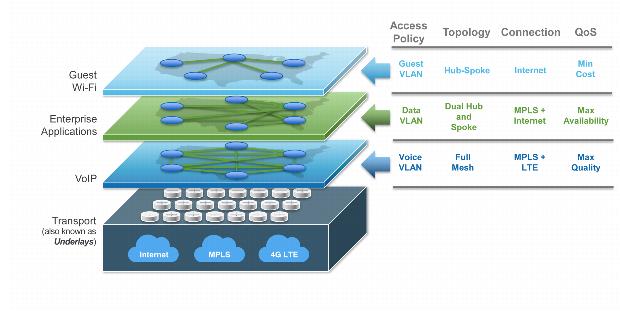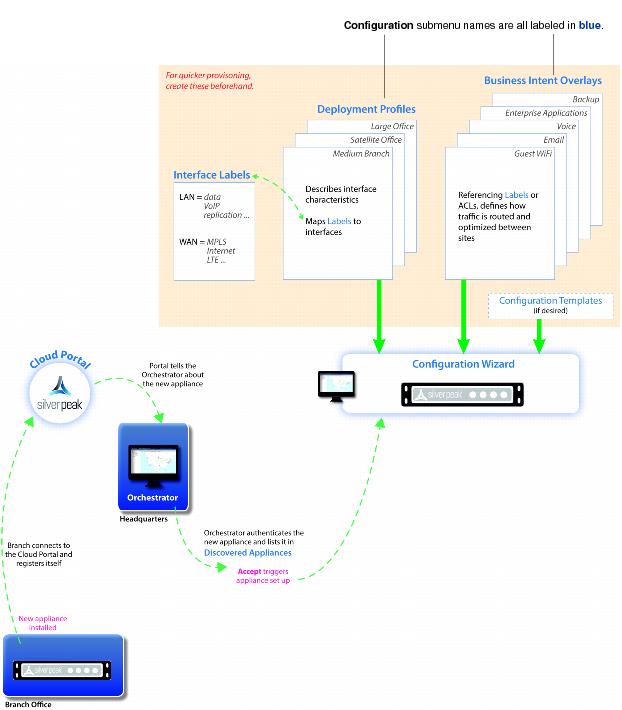|
n
|
Interface Labels associate each interface with a use.
|
|
•
|
|
•
|
|
n
|
Deployment Profiles configure the interfaces and map the labels to them, to characterize the appliance.
|
|
n
|
Business Intent Overlays use the Labels specified in Deployment Profiles to define how traffic is routed and optimized between sites. These overlays can specify preferred paths and can link bonding policies based on application, VLAN, or subnet, independent of the brand and physical routing attributes of the underlay.
|
|
1
|
Registration and discovery. After you Accept the discovered appliance, it opens the Configuration Wizard.
|
|
2
|
Provisioning. Since the wizard prompts you to select profiles, it’s easiest to create these ahead of time.
|


